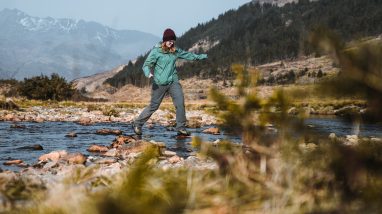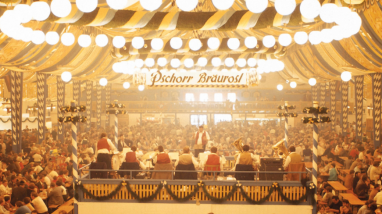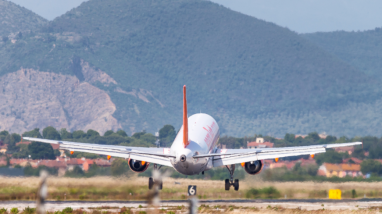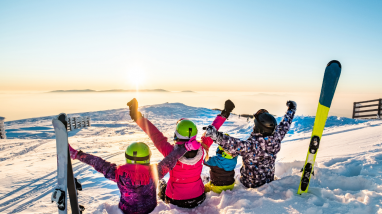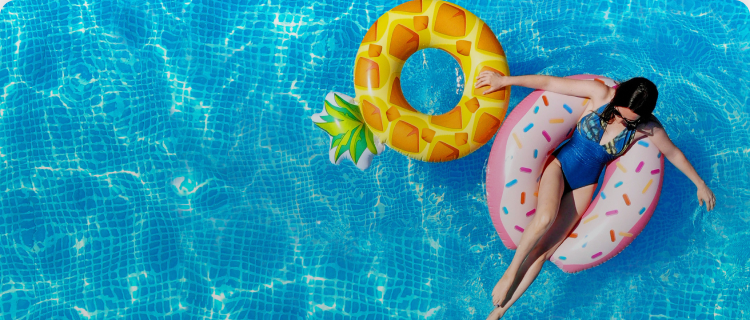Thinking of a camping break in Scotland? You won’t regret it! Scotland is more, much more than just the land of whisky, haggis and the Loch Ness Monster (as many would have you believe).
It’s culturally diverse, with distinct areas, great local food and a strong identity. It also happens to be one of the most beautiful countries on the planet. You can find your own piece of paradise there with Campsited.
But first, here are your need-to-knows if you’re visiting Scotland for the first time.
Quick summary:
- Regular flights into Glasgow and Edinburgh from Europe
- Beautiful Highlands landscapes and 6,000 miles of coastline
- Distinct areas: Highlands, Lowlands, Borders and North East
- You can bring your car from Europe, but we drive on the left over here
- The weather is changeable so be prepared for sun (and occasional wet weather)
- Weather in the east is drier than the west
- The currency is the British Pound Sterling (£GBP)
- 999 is the number for emergency services
- Bring an EHIC with you
- All sockets are designed for British three-pin plugs
The people and culture
Scotland is a proud and diverse modern nation that also happens to have a great deal of history and culture. Their cities are hot beds of culture and industry and their landscapes are rich in stories and song – and castles. Aberdeenshire, for example, has more castles per acre than anywhere else in the UK.
Each area of the country – don’t forget that Scotland is about more than just the Highlands – has its own culture, with some having distinct local (Gaelic or Scots) dialects and accents. Locals are often straight-talking and extremely welcoming to friendly visitors, so don’t be afraid of sparking up conversation – especially if it’s about rugby, the nation’s favourite sport. And while you might be expecting famous local dishes such as haggis, neeps (parsnips) and tatties (mashed potato), you’ll find a lot more. With so many wonderful local ingredients to work with – Aberdeen-Angus beef, wild salmon, venison, shellfish, raspberries and strawberries (among many others). And when it comes to whetting the whistle there’s more than just a peaty dram. Scotland now has 80 micro-breweries making world class beers. Go and try them for yourself!
Culturally there are all sorts of interesting goings on to enjoy, from the Edinburgh Fringe to the Wigtown Book Festival in Dumfries and Galloway to the Mela and Glasgay in Glasgow. And if you simply fancy getting involved in a Ceilidh then you’ll find them all over.
Oh and many men still dress in the traditional kilt. So don’t be surprised to see it. In fact, it may pay to ask about the tartan. Each one has an interesting history. It’s a great talking point.
Language
Unbeknownst to some, Scotland is a country of many languages. But don’t worry, you will get by just fine with English, even though Scottish Gaelic is spoken by around 60,000 people. The strongholds are in the Outer Hebrides and Argyll and Islands. Even there if you don’t know the language you’ll still find a warm welcome. Mind you, learning a few simple words may help to break the ice!
You will also find areas in the north, northern isles and east where Scots is spoken. There are 10 distinct dialects and it has a strong tradition of music and song. Find out more here.
In some towns and cities you may also be surprised to hear languages like Punjabi and Urdu. It just goes to show how diverse Scotland can be. Sikhs have been present in Scotland for well over a century.
Size: Scotland is a big country
While Scotland is nowhere near as big as its nearest neighbour England (it has about three fifths of the land mass) there is no doubt that it is a big place. You only have to drive the A9 or walk to Cape Wrath to know that. But what it lacks in landmass it makes up for in landscapes. Even small Islands like Arran – which is said to be a Scotland in miniature – has epic landscapes around every bend. However, for the record, the mainland measures roughly 390 miles from Cairngaan in the south to Thurso up in the north and is around 200 miles across from east to west at its widest point. Scotland is also made that bit more magical by the presence of 790 isles and islands, only 130 of which are inhabited.
The country is made up of 33 counties. Population density is low too, with areas like Dumfries and Galloway having just 23 people per square kilometre, compared to Cornwall’s 153 and Westminster’s 10,000.
Getting here: road, sea and sky
Since Norfolkline integrated into DFDS Seaways in 2010, there are no longer any direct ferry routes into Scotland from mainland Europe. If you are travelling by ferry the fastest option is to sail into the Port of Tyne in Newcastle, which is a 90-minute drive to the Scottish border and 125 miles to Edinburgh along the A1. Flying is an option too.
Both Glasgow Airport and Edinburgh Airport offer daily flights to and from dozens of European destinations. Aberdeen Airport also operates flights to England, Ireland and mainland Europe, including Iceland. There are also plenty of connections to The Hebrides, Shetlands and Orkneys.
Find the cheapest flights to Scotland with Skyscanner, Momondo, or Google Flights: search by destination and the dates you’re traveling, to score a deal and get your camping trip to Scotland started.
As an EU, US, Canadian or Australian citizen you need no more than your passport and a sense of adventure to enter the country.
Scottish landscape: lochs, mountain tops beaches, dunes, forests and more…
If unspoilt wilderness and jaw-dropping beauty feature among the ingredients for your dream camping holiday, Scotland is the place for you. Having distinct areas means also having distinct countryside, so you can choose between the peaks of the Highlands, the vast rolling openness of the Lowlands, the pretty coastal villages of the East or the wild and untamed lochs and inlets of the far North. Loch Lomond is a favourite area because it’s beautiful and, in some ways typical, but there is more to Scotland than that.
The Trossachs is a good place to see ‘The Highlands in Miniature’, while a drive up the East Coast will reveal stunning beaches and pretty towns. Visit the smoke houses of Arbroath and the origin of the smokie at the crucible-like cove at Auchmithie or stretch the legs on the mile of sand at Lunan Bay. Further north you can explore peat bog and wild sea stacks at Sandwood Bay or beautiful inlets that will take the breath away in Caithness and Sutherland. Then again, a trip to the islands will reveal more beauty.
From the wild peat bogs and harbours of Lewis to the white sand beaches of Harris and Barra, to the seal rich shores of Arran, there is so much to see. And, as you’ll discover, it’s not just about the mountains. Mind you, they are spectacular!
Getting around: beautiful drives and good transport links
Bringing your car or camper? Let’s talk roads for a moment. The M74, A68, M90 and A9 are the main arteries northwards from the south, the latter of which travels the spine of the country. The A85 runs east to west through the Highlands while the M8 connects Edinburgh and Glasgow. This being Scotland, you can expect some stunning views from the driver’s seat. Especially off the beaten track.
Bealach na Bà in Ross, Stirling to Skye and Inverness to Nairn are recommended – and the A9 has been called the most beautiful A-road in the world.
No car? No problem. Scotland has reasonable bus and rail links, with branchline stops across the country – although you will need a taxi to reach the more remote campsites. Traveline Scotland provide an online journey planner (and smartphone app) that will help you plan a smooth journey using public transport.
Driving in Scotland
There are a few things you need to know before pulling away from the ferry terminal. In the UK you drive on the left and pass on the right.
There are no restrictions on bringing your left-hand drive car from Europe, as long as you are visiting for fewer than six months and have valid tax and insurance in your home country. Check your insurer covers you for driving in the UK. Also note that speeds and distances are measured in miles, rather than kilometres. Brush up on the rules of the road with TripAdvisor’s guide.
Finally, take your time. Away from the main roads the going can be narrow with lots of twists and turns. Allow for plenty of travel time and go steady.
Camping in Scotland: is it expensive?
Although travel, food and accommodation costs can be higher in Scotland than the EU average, it is still perfectly possible to enjoy Scotland without spending a fortune – especially given your self-sufficiency as a camper. And don’t forget that access to Scotland’s best attractions – the coast, countryside, mountains and beaches – is absolutely free!
Like England, the currency is the British Pound Sterling (GBP). Major credit and debit cards (such as Visa and MasterCard) are widely accepted, but carry enough cash to cover you in remote areas – although many local shops will be able to offer you cashback with your card purchases.. ATMs (cash machines) are widespread in cities and towns, allowing you to withdraw cash without charge, although your card provider or bank may charge a small fee for accessing money abroad. Speaking of which, tell your bank about your travel plans.
Many banks have fraud prevention teams that freeze debit/credit cards if they spot unusual activity. Withdrawing money hundreds of miles from home could look suspicious.
Weather in Scotland
If there is anything to be aware of about Scotland it is that the weather can be fabulously temperamental. That doesn’t mean that it will always be wet, far from it, but it’s as well to be prepared. Scotland’s climate varies from region to region. The East, for example has about half of the rainfall of the West, simply because of the effects of the Gulf Stream. The prevailing winds are from the west and south west, with the East sitting pretty in the rain shadow of the highlands.
However, be aware that changeable weather means good and bad, so be prepared to strip off or put on from time to time. Layering is the key here so you can make the most of the sunshine and still be prepared for less inclement weather if it arrives. That’s where your merino and fair isle knit are going to come in useful. In winter expect snow and ice in the Highlands as the temperature can drop as low as minus 4 or 5 overnight (and often lower), but in summer expect daytime averages to be around 15 – 17 degrees, with the possibility of a fine day pushing the mercury up further.
Again, the key is to be prepared, no matter where you go. It’s as bad to be caught out in a jumper on a hot day as it is with no waterproofs when the heavens open!
Midges: it isn’t that bad, but bring insect repellent
While they can be an irritation in some parts of the country – the Highlands and Islands – they aren’t present all over the country. They can’t fly when there is a breeze so there are many days when you won’t see any, especially at the coast.
So, while the midges can be annoying, there’s no reason they should hamper a happy holiday. They are active in the summer months (late May to early September) and favour dawn and dusk near wet uncultivated land. (Think sunset beside a loch in the Highlands.) Hot, wet weather is their favourite but they do hate the wind and cannot fly if the breeze is any more than 4 mph.
How to beat the midges? Oodles of midge deterrents have been touted by campers, from the natural (lavender oil) to the chemical (DEET); from the crazy (garlic capsules) to the even crazier (pints of lager). Avon Skin So Soft is said to be a miracle cure and is sold by some campsites. The simplest answer is to make sure your skin is covered when the midges are flying.
Shops and supermarkets: the essentials are easy to find
You won’t struggle to find places to stock up on teabags, marshmallows and other campsite essentials. There are numerous supermarkets in most towns and cities – such as Aldi, Tesco and Sainsbury’s – you’ll also find a plethora of independents, farm shops and little village stores selling just about everything you need. And that includes fabulous local produce.
You’ll find it’s tasty and varies from region to region so you’ll get a real feel for what’s important to each region as you pass through. In fact, the more you shop at these, the more you’ll support the Scottish growers and producers and help to keep the local communities alive. And you’ll get to taste the real, undiluted Scotland with produce straight from the field, river or shore.
When it comes to other essentials, like washing and scrubbing, you will find coin-operated laundries in most towns and cities – as well as your campsite. The simple pleasure of clean, dry clothing is a steal at £3. In some places, like Stornoway on the Isle of Lewis, for example, you can get a good hot shower in the local community centre for a few quid. Worth every penny.
Tipping: a little means a lot
Eating like the locals do – that’s how you really get to know a country. And why not? If you are heading to a local bar or restaurant for dinner, it’s polite to leave a 10-15% tip at the end of your meal.
A little extra on top of your taxi fare will be gratefully received too. The local knowledge you gain from your driver will be worth it.
Emergencies
The number for the emergency services is 999. Mobile coverage is generally good in Scotland, but can be non-existent in remote areas. And of course it’s the wilderness that’s the most enjoyable to explore. VisitScotland has some tips on staying safe while walking the wilds.
Crime levels are practically non-existent (as are people), but it makes sense to brush up on your first aid skills before you leave home. In the cities meanwhile, the main crime risk is from pickpocketers. Keep bags and zip pockets fastened and only carry the things you need.
Phones and Wi-Fi
Smartphones are ubiquitous these days. If you are bringing yours, it should connect to a local network automatically – although you may need to restart your device first. Check with your network at home how they charge for the use of data abroad.
Foreign data roaming charges can be eye-wateringly expensive and it’s easy to get caught out. Many campsites as well as most pubs, cafés and restaurants offer free, secure wi-fi – meaning you can connect without the cost.
Healthcare
Nobody likes to think of something going wrong on holiday. But sometimes accidents happen. Scotland, like the rest of the UK, has reciprocal healthcare agreements with a range of foreign countries, including all members of the EU as well as Australia and New Zealand. It means you can access free medical care on the NHS – whether you’ve tripped on a guy rope and hurt your wrist or it’s something more serious.
Visiting from the EU? A European Health Insurance Card (EHIC) will save you lots of time if you need medical care. It’s free and will slot neatly into your purse or wallet.
Camping culture in Scotland
There are all kinds of campsites in Scotland. So whatever you want, you’ll find it. There are wee sites by the water, glamping sites with heated pods, homely sites on farms, large touring parks and family run sites with oodles of charm.
Of course everyone’s idea of a campsite is different. Some prefer peace and quiet, while others look for facilities and a buzzing, busy atmosphere. So it’s hard to judge what one camper will love against another. However, there are various accreditation schemes to ensure that basic amenities up to scratch, although not all sites subscribe to them. Both the AA and VisitScotland have graded Scottish campsites from 1 to 5 after unannounced visits. The grades are based on standards of customer care, landscaping and facilities. VisitScotland also offer a prestigious Gold Award for campsites with the very highest levels of excellence. And if you’re keen to pitch up somewhere with tip-top environmental credentials, look out for affiliation with the Green Tourism Business Scheme.
Most major commercially-owned campsites have some kind of accreditation. But don’t forget there are lots of small, independent campsites that are off the inspectors’ radar – many of which put you a stone’s throw from stunning Scottish scenery. Want escapism without giving up your home comforts? The glamping movement is seriously catching on in Scotland, with luxury sites from the coast to the countryside. Camping season generally runs from spring to autumn, but some campsites are open all year round for hardier campers and their fleecy clothing.
Choosing the Perfect Scottish Campsite
Whether it’s a fun-filled surfing break in Thurso or Fraserburgh, a foodie tour of eastern smoke houses and restaurants, an island hopping adventure through the Hebrides or up to the Orkneys, a walking tour of the Highlands or even a driving adventure down the west coast, Scotland has an enviable selection of campsites.
There really is something for every type of camper – whether you want your own private wilderness or would rather be within walking distance of a warm, welcoming little pub.
Find your perfect place here on Campsited and get ready to take in the dramatic beauty of bonnie Scotland.
Also, if you’re overwhelmed and need some advice on what and where to go in France, please get in touch through our online chat facility and we can help walk you through the process.
Your dream camping holiday in Scotland is just a few clicks away!
